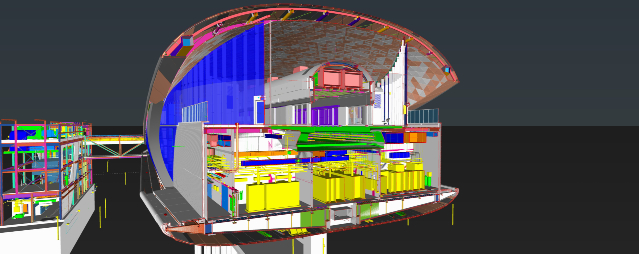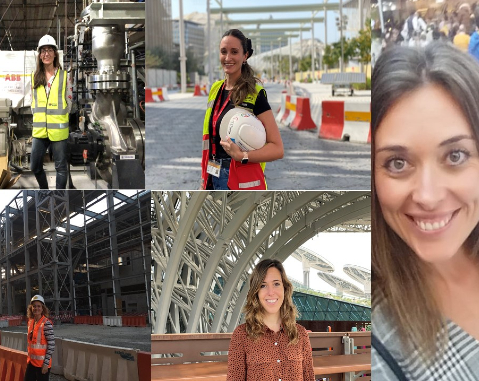- ACCIONA
- Press room
- Blog
- 2020
- October
- From BIM to ''BI(M)G D...
From BIM to ''BI(M)G Data''
05/10/2020By Pedro Rey Antón, ACCIONA Middle East BIM Coordinator

A decade ago, talk about BIM was only found in very specific research and development groups, as well as some pioneer companies. However, nowadays the term BIM has spread throughout the construction sector and “Building Information Modelling” concept has become essential. Terms like BIM Manager, parametric objects, Common Data Environment, 4D, 5D, Asset lifecycle management, LOD (Level of Development), LOI (Level of Information), are day-to-day terms in AEC Industry.
During these last years, we have witnessed how the BIM methodology has progressively been implemented in many countries. This demand, which was before the desire of a particular developer or a contractor enhancement, now is a requirement and a reality in most of the complex projects in addition to being requested by the public administrations and employees.
Developing a project with BIM has evident and well-known benefits. BIM provides an increase of the productivity and an improvement of the project´s workflow, cost reduction in the constructive process as well as a cut down of execution times. Furthermore, BIM minimizes human errors and potential clashes, allows easy analysis of the different stages of the project and improves communication between the different stakeholders, just to say a few examples.
It is a fact that BIM is a reality today. The BIM market forecasts will expect to grow from USD 3.58 billion in 2017 to USD 7.64 billion by 2022. In a short while, projects will be fully developed with the BIM methodology in a common and routine mode, in the same way that no one is thinking of detailing drawings by hand, but it is done with CAD software. This will take us to a point where, by default, projects may be analyzed in advance, giving rise to an industrialization of the construction works.
What will be the next step once BIM methodology is fully implemented as a construction process?
From my point of view, once this is achieved, the “B” (building) and the “M” (modelling) will be dissolved and the “I” (information) will be the great strength of this methodology. The idea of modelling will be totally integrated in all the construction process and the information will be the valuable point, which is already known as “Big Data”.
Nowadays, Big Data is developed in all the different business sectors. It is a key concept. As it is popularly said: “Data is the new gold”. And this is also for the construction sector. We are all accustomed to industries such as banking or marketing have been using Big Data to set up their commercial strategies for years. For example, based on bank accounts and movements, financial companies offer specific banking packages. Depending on consumer choices, specific discounts are offered for different products for supermarket shoppers.
This connection between the construction works and Big Data will be through the development of a “Digital Twin model”. This model will be conceived as the result of integrating 3D images, construction and design data, i-model, virtual and augmented reality, artificial intelligence, etc. The “Digital Twin” provides the possibility of creating a virtual mock up of the physical entity. Once this twin model is created, the amount of information linked will be enormous since the first establishment of the work, from the early design. This data collection and its subsequent use will be of utmost importance. The model will be developed in parallel to the building and will be fed by all agents throughout the construction of the building, as well as its subsequent use. In addition and at the same time, it will be updated by sensors located in the buildings. The sensors will send information about the work performance, for example, based on the monitoring of how the materials are affected by climate and the passage of time. They can provide information about possible changes in energy efficiency or the structures behaviour.
However, what is going to be the change in the AEC Industry? Based on the digital twin, simulations are carried out to make analyses and predictions. This will improve the productivity within a real impact on costs and provide an opportunity to generate new business models. In other words, Big Data will allow us to deal with a large volume of data, both structured and unstructured. With this information, we will perform predictive and advanced analysis, which helps us to make strategic decisions. This decisions based on a prediction of behaviour as well as real data, will allow us to minimize the error threshold and allow the possibility of making crucial decisions in real time.
Furthermore, processing this huge volume of data will allow for a more strategic view of construction projects and their status. The collection and analysis of these data will be really useful for construction companies to improve efficiency levels.
Last but not least, this huge knowledge will also be an opportunity to optimize processes and improve the outcomes of the construction sector. For instance, AI(Artificial Intelligence)-enabled processes could be used in planning and scheduling activities, since they have the potential to evaluate endless combinations and alternatives based on similar projects, optimizing the best route and correcting themselves throughout the project stages.
So, what will happen when we reach that point? At that moment, the model will not be the working-model as we know it today. The construction project will be developed with massive data schedules from data management software such as Excel, SAP or ORACLE. The model will be just a photograph of that information. This photograph will be a visual confirmation that these data make sense and it will show us that what we are creating is optimal. It will provide the proof that these data is the desired viaduct, tunnel, complex structure or amoeba-shaped roof. It will be a digital pre-construction. The model will be the way to coordinate that huge amount of information between the different disciplines in the project.
To sum up, in future, construction will be developed in BIM methodology because it will be the only way to develop complex projects. However, nobody will talk about BIM itself anymore. Each one in his role will see the information identified as important for that defined role, so that they can identify the strengths and weaknesses to achieve their objectives. It is important to emphasize at this point that the training of users for the tools and the BIM methodology along with its possibilities is a key factor for the achievement of the project goals. The value of the user will be how he analyses and utilizes this information. As a result, HR will never look for purely “BIM profiles” anymore.


View ACCIONA Social Networks